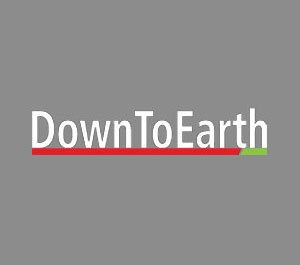|
Kolkata Municipal Corporation has an area of 185 km2 and the Kolkata Metropolitan Area is spread over 1,750 km2 with 15 million people. Pollution levels in Kolkata are high and on the increase. The city will have to take steps to reduce motorisation, so that it can deal with congestion and air toxins. Kolkata has made a beginning to reduce air pollution – its decision to phase out 15-year-old commercial vehicles from plying within the Kolkata Metropolitan Area and to make a transition from old polluting two-stroke engines to cleaner four-stroke engines running on LPG are steps in the right direction. But much more will have to be done. The city is constrained by the road space – it has less than 10 per cent of its land area under roads, against Delhi’s 21 per cent. Therefore, even though the city has fewer cars than Delhi the result is the same – growing congestion and pollution. It is important to expand the infrastructure for buses and not cars.
|
| |
Air and mobility facts
|
| Vehicle: Galloping numbers |
|
Air quality trends – Annual average levels of PM10 and NOx |
 |
|
.jpg) |
| |
|
|
| Diesel’s contribution to PM2.5 in Kolkata |
|
How people travel? Maximum people are on foot, pedals, buses and autos
|
.jpg) |
|
.jpg) |
|
Source: World Bank, 2004
|
|
|
| |
|
Congestion:
Average journey speed is as low as 18 km per hour. (Ministry of Urban Development and Wilbur Smith Associates report 2008.) Journeys to and from the centre (BBD Bag) or in and around Barrabazaar, New Market, Howrah and Sealdah stations incur substantial delay. Kolkata has little less than 2000 km of roads – just 6 per cent of its area
|
| |
Public action:
|
|
Air pollution crusader: Subhas Dutta, Environmentalist: Green activist Subhas Dutta has taken up cudgels to fight air pollution in the city. His involvement with the public interest litigation in the High Court recent victory is over the government forcing them to implement the ‘15-year-old automobiles off the road’ rule. On his radar are 15 separate public interest litigation (PIL) suits — six in the Supreme Court and nine in the Calcutta High Court. These include high-profile cases like the shifting of Esplanade bus terminus and combating air pollution in Calcutta. Also, he’s fighting a long-running court battle to save the Ganga in Bengal.
|
|
Read more: http://www.telegraphindia.com/1091004/jsp/graphiti/story_11570166.jsp
Contact: http://twitter.com/green4india/subhas-datta
|
|
Tram crusader: Debasish Bhattacharya, a scientist and a champion of the “save tram” movement in Calcutta and the tram crusaders, have organized campaigns along the tram tracks between the Maidan and Esplanade; trying to highlight the importance of the public transport system in the city. They are trying to drum up support for trams in Calcutta, which is fast gaining international notoriety for its polluted air and its potential climate change impact. Since 2000, tramways have come back in more than 100 cities across the world mainly to combat environmental pollution,
|
| |
Policy action
|
| First generation action has taken roots. The city has yet to meet the clean air standards. Policy decisions and action so far in the city |
|
Action on vehicles
The city has introduced Bharat Stage IV norms for vehicles in 2010
Two-stroke autorickshaws banned
Selling of pre-mixed 2-T oil made mandatory within Kolkata Metropolitan Area since November 2001.
Ban on supply of loose 2T oil.
Introduced 50 ppm sulphur fuels
Up gradation of PUC emission testing centers
Unleaded petrol introduced since February,.2000.
Benzene content in petrol reduced to 3 percent from 2001 subsequently to one percent
Only LPG driven three wheelers are registered in Kolkata since June 2003.
Petrol blended with 5 percent ethanol mandatory since January 2003.
|
|
Action on industry
Stricter location policy for new industrial units and restriction on setting up of polluting industries in municipal area of Kolkata Metropolitan Area (KMA)
Efforts to ensure regulatory compliance for grossly polluting industries
Introduction of stricter emission standards for boilers, ceramic kilns, foundries and rolling mill of KMA with effect in May 11, 2001
Mandatory use of clean fuels
Financial assistance for installation of pollution control devices in small-scale industries etc.
Regularly complying industries are felicitated with Environmental excellence awards.
M/s Coal India Ltd. , M/s Eastern Coalfield Ltd., M/s Bharat Coking Coal Ltd. have been requested not to supply coal to the industries which have been ordered to discontinue the use of coal.
About 67 percent of the coal fired boilers and about 73 percent of the coal fired ceramic kilns have already been converted to oil fired ones.
|
|
Source: MOSRTH and Air Quality Trends and Action Plan for Control of Air Pollution from Seventeen Cities, CPCB, 2006
|

.jpg)
.jpg)
.jpg)





Share this article